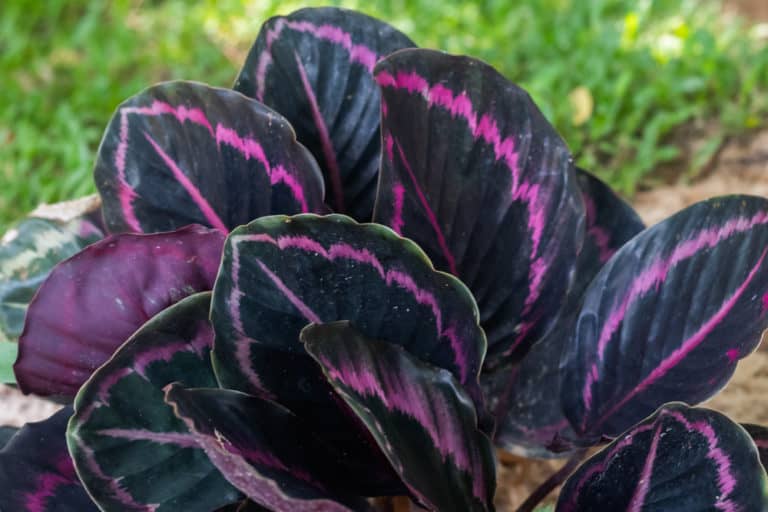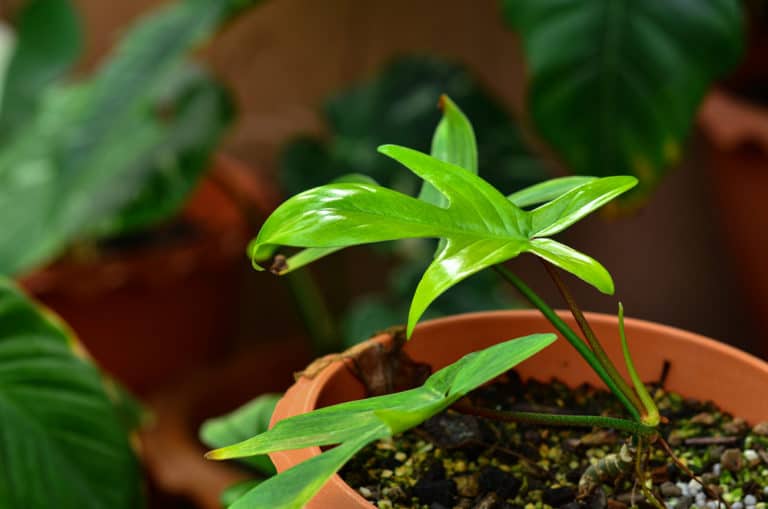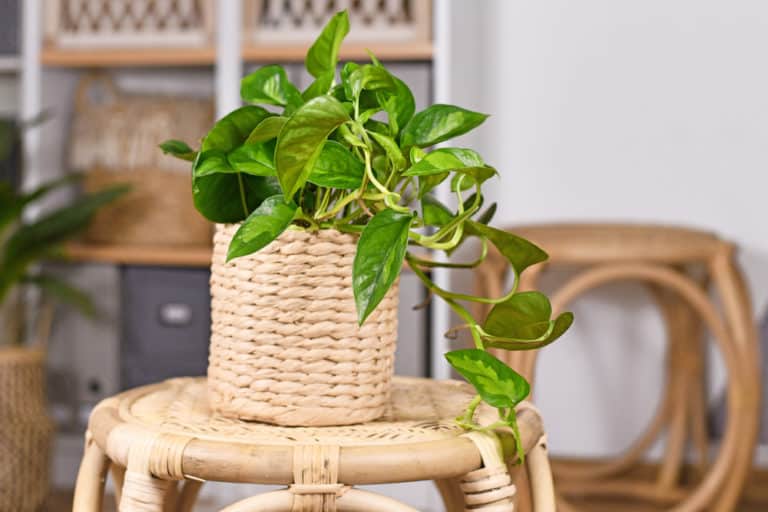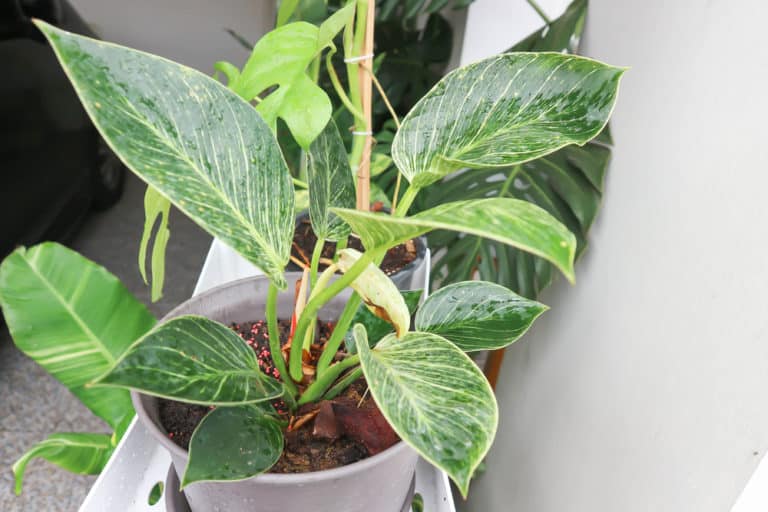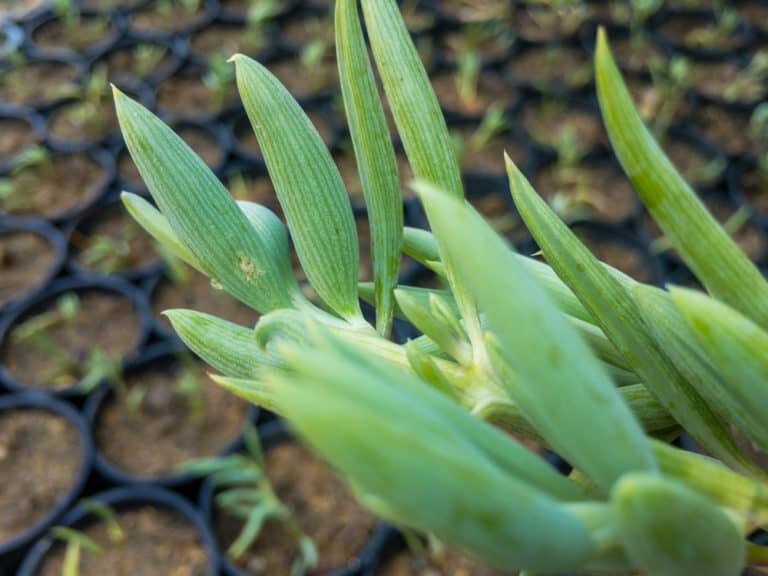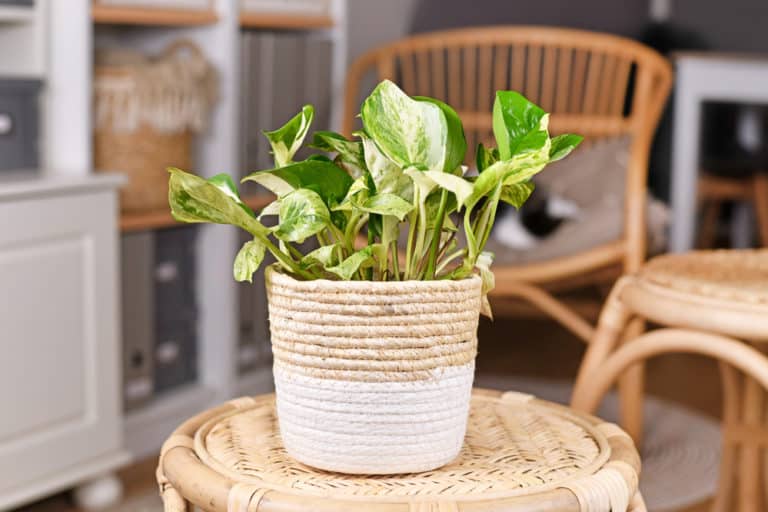Othonna Capensis ‘String of Rubies’ Care Guide (2024)
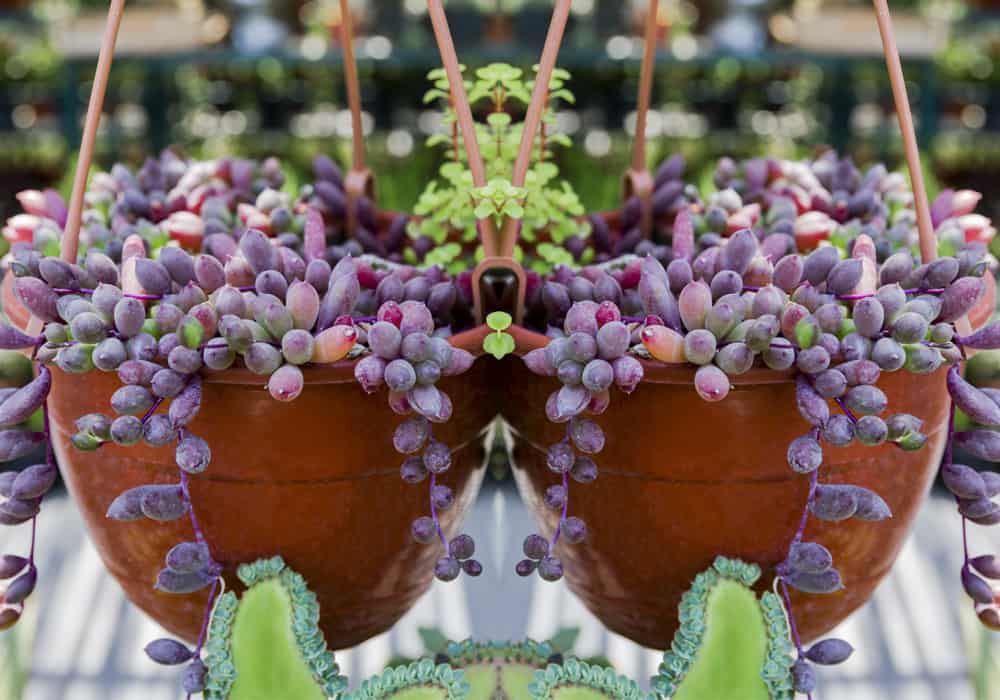
There are various species of succulents that have a trailing habit. One of them is the string of rubies, botanically known as Othonna capensis. This succulent beautifully hangs from its container just like a ruby necklace. Some gardeners call it as String of Pickles because of the shape of its leaves.
| Scientific Name | Othonna capensis |
| Common Name | String of Rubies, Ruby necklace, String of Pickles |
| Light | Bright direct light and low indirect light |
| Watering | Dry out thoroughly between waterings |
| Temperature | Above 50°F (10°C) |
| Hardiness Zone | USDA hardiness zone 9a to 11b |
| Humidity | Typical household humidity levels |
| Soil Type | Well-draining, acidic soil |
| Soil pH | pH between 6.0 and 6.5 |
| Fertilizing | Fertilize twice during the growing season with a succulents fertilizer |
| Repotting | Every two to three years |
| Pruning | Beginning of the growing season if they become straggly to rejuvenate growth. |
| Propagation | Stem cuttings |
| Toxicity | Non-toxic to both humans and pets |
| Mature Size | 2 inches tall |
| Bloom Time | Spring, Summer, Fall |
What’s Unique About String of Rubies?
The unique reason why the string of rubies plant is called such is that its leaves turn into a bright ruby color when stressed. This is not a very good circumstance for the plant, of course! However, this response to stress becomes an extraordinary feature that sets this species apart from other trailing succulents.
You would find this succulent abundant in South Africa where it originates. But because of its ornamental value, it has gained popularity among gardeners with its color-changing foliage. You’ll find the string of rubies plants in succulent specialty stores, in pots, or in hanging baskets.
String of Rubies Care
Othonna capensis care is easy and undemanding. You can literally leave your plant unattended for a period of time, and it won’t be bothered. However, there are some specific requirements involved in a string of rubies plant care that you shouldn’t ignore. Once you’ve learned them, you’re succulent will flourish for years.
Light
The string of rubies light requirements involve bright and direct sunlight. This is non-negotiable as this species is sun-loving. It will certainly love exposure to full sun for at least six hours every day. Hence, it will do well outdoors in spaces that receive bright sunlight.
It’s also possible to keep the plant indoors. But make sure that the location is bright and sunny. The best location would be a South-facing window. Low, indirect light will also be fine. The only difference is that the leaves will turn greener with low light. Use of supplementary sources such as grow light will help satisfy the Othonna capensis light needs, leading to more colorful foliage (purple reddish).
Watering
Remember this species is succulent and most succulents have a drought-tolerant characteristic. Be careful when it comes to the string of rubies watering. We want to avoid problems that result from overwatering, especially root and stem base rot. The standard rule is to wait for the potting mix to completely dry before you water Othonna capensis again. We call this soak and dry method.
Don’t panic if you’ve forgotten to water your succulent for an extended period. It has the capacity to survive as those bean-shaped leaves are meant to store extra moisture. The String of Rubies has low watering needs and it’s better to keep it on the dry side.
Temperature
The ideal temperature for Othonna capensis should be above 50°F (10°C). As a species native to tropical and subtropical areas, it requires a warm environment for growth and development. This plant has low-temperature tolerance for cold weather. Thus, if exposed to temperatures lower than the threshold, your succulent could freeze. We recommend bringing it inside your home if you live in a place that experiences the winter season.
Locations under USDA hardiness zones 9a to 11b are perfect because they offer the ideal string of rubies temperature range. But you have to be mindful of sudden changes in temperatures. Also, avoid places with cold drafts.
Humidity
It’s quite easy to achieve the string of rubies humidity requirements. The typical humidity level you have around your home is enough to keep it healthy. There’s no need to strive to increase humidity because succulents love dry environments. In fact, the drier it gets, the happier your succulents will be.
Maintaining the ideal humidity for Othonna capensis is critical because if it gets too moist, your succulent may experience rotting. Molds and other fungal problems may also arise from this unfavorable condition. Avoid placing your String of Rubies in kitchens or bathrooms. These locations are naturally humid. Your succulent could die there.
Soil
Any succulent soil mix will work as string of rubies soil. This mix bears the ideal properties that would favor the roots of your succulents. It is well-draining and porous, one that will easily drain excess moisture. To make your own soil mix, combine a small amount of regular potting soil with plenty of perlite, sand, or pumice. Always test the drainage by pouring water into it.
The soil must have the correct pH too. It will affect the availability of nutrients in the soil for Othonna capensis. The specific ph level for Othonna capensis should be between 6.0 to 6.5 (slightly acidic).
Fertilizer
Most succulents are not heavy feeders. The same is true for String of Rubies. It wouldn’t require regular application of fertilizer. But if you wish to add a string of rubies fertilizer, do so when it’s springtime. This will boost and support new growths of your succulent. You can fertilize just twice during the growing season.
The best fertilizer ratio is the one that contains a low nitrogen level. Be careful when feeding. Always make sure that you dilute the fertilizer for Othonna capensis according to the instructions provided on the label. Overfertilization could lead to the immediate death of your plant because it burns the roots.
Potting & Repotting
It’ll take about two to three years before you can proceed with the string of rubies repotting. It likes to be a little pot-bound and does well in containers with relatively smaller pot size. Once the roots start coming out of the pot, that’s a call for repotting Othonna capensis.
Choose a new container that’s slightly bigger than the old one. Layer a fresh potting mix at the bottom. Place the String of Rubies there, careful not to damage the delicate roots. Fill in the remaining spaces with succulent soil mix, firm enough to hold the entire plant. Water the pot thoroughly and drain excess water.
Pro-Tip: Some plants experience stress from repotting, hence, they get droopy after. To avoid such, place your newly repotted plant in partial shade first.
Pruning
String of rubies pruning would involve trimming down excess growth and removal of dead or diseased leaves and stems. One purpose of this is to not only keep the whole plant tidy and aesthetic. Another benefit is to prevent disease spread and encourage new growth.
Wait for the growing season to arrive before cutting Othonna capensis. This time is best because plants are actively growing and regeneration will be faster. When pruning, remember not to cut more than a third of the plant’s entire size. And before you trim, disinfect whatever tools you are using to kill pathogens that might be present there.
Propagation
The use of stem cuttings is the easiest and most convenient way to propagate Othonna capensis. Find a mature stem with at least 2 to 3 nodes and cut it using a sterilized scissor. Allow the cuttings to callous for a few hours. After that, plant the stem cuttings into the potting mix. Water well and set it aside in a partially shaded place.
The stems that you trimmed down from pruning are also suitable for use in a string of rubies propagation. However, you should choose only the healthy and mature stems.
Pro-Tip: Propagate during the growing season so rooting will occur more easily.
Common Problems of String of Rubies
Some string of rubies problems may surface throughout different stages of its growth. So, be ready to face them. Leaves may turn yellow or brown and fall off eventually. Red spots and other discoloration may develop due to pests or diseases. Hence, be ready to face such problems with Othonna capensis.
Pests
Certain bugs like mealybugs and scales may infest your Othonna capensis. These pests are known to damage plants by sucking sap from the tissues and leaving lesions and spots on the leaves. They are mostly found on the younger portions of the plant like new leaf growths. To spot them, you should also inspect the undersides of the leaves along with the base of stems.
You can treat affected areas by spraying insecticidal soap, neem oiI, or even just pressurized water. Some folks also rub the infected portion with cotton dipped in 70% alcohol. These methods will work on getting rid of the string of rubies pests.
Diseases
Othonna capensis doesn’t have lots of diseases unless you have it overwatered. Root rot which is a form of a fungal disease may occur from excessive moisture. Some pathogens can survive in the unsterilized soil for too long and only takes action once the environment gets favorable for them. That’s why apart from keeping your water in check, make sure to also use clean potting mix.
Thankfully, there are no other serious string of rubies diseases that you should be wary of. It’s very unlikely for this succulent to acquire diseases if you are faithful in maintaining the ideal conditions.
Growing Problems
Stunted growth is one obvious sign that your succulent is a sick plant. There are lots of reasons for this. It could be due to pest infestation, disease occurrence, or prolonged exposure to a stressful environment. If the succulent lacks vigor, it’s highly probable that it is not happy with its current situation.
What you can do to combat such growing problems is to find a more suitable location for your succulent. One that has good lighting, a warm temperature, and low humidity. Repotting the plant to a new container is also another option. Adding in fertilizer can also help.
Toxicity of String of Rubies
There is nothing much to worry about toxicity issues with Othonna capensis. This succulent species is home-friendly because it doesn’t contain any compound that might be toxic to humans (adults or children) and pets. However, the plant is not edible and may result in some health issues if ingested in large amounts.
For Humans
Humans, either adults or children are completely safe with having a String of Rubies around their home. Since this species is non-toxic, you won’t have to worry about facing certain problems related to toxicity. Unlike other toxic plants, contact with its sap won’t bring harm. So, even if you forget to wear your gloves, your skin is safe.
Kids, however, are more explorative. They may try to pick the leaves and eat them. Although it doesn’t contain any toxic compound, they may develop an upset stomach. It really depends on how sensitive their gut is. So, keep it away from your toddlers.
For Pets
Growing string of rubies is also safe for your pets. If you have dogs and cats, worry not because this succulent is friendly to our furry babies. Since there’s no toxic compound present, ingestion of its parts won’t lead to serious health troubles. Hence, there’s no need to be extra cautious or paranoid.
However, if your pets are kind of naughty and love to explore, it’s best to keep this plant away from them. The string of Rubies are very fragile and they can easily get ruined should your pets decide to play on them. For sure, you don’t want to go through that ordeal.
String of Rubies Appearance
The string of rubies appearance has close similarities to that of its cousin succulent, namely: String of Banana. The leaves are bean-shaped but it does have ruby red to purple stems. The whole plant has a trailing habit. Apart from its attractive foliage, it also bears gorgeous flowers making it more adorable.
Foliage
The foliage of string of rubies bears the typical characteristic of a succulent, plump, and fleshy. The reason for this is that they use each leaf as storage of water allowing them to tolerate drought conditions. It has the shape of a bean or pickle. And the leaves trail down as they are attached to a hanging stem.
The fascinating thing about those leaves is that they turn bright ruby in color once under stress. So, you would know whether your plant is doing well or not, just by the color of its foliage. The changing color, however, is its unique asset.
Flowering
String of rubies flowering may occur anytime between Spring, Summer, or Fall seasons. You will most likely see some small, daisy-like flowers blooming happily under the sun. Those flowers serve as the crown of the plant as they make it look really pretty.
If you want to see Othonna capensis flower on your succulent, make sure that you provide ideal growing conditions. A healthy plant will generously bear flowers throughout the seasons. But if not, that’s fine. Your String of Rubies will remain gorgeous anyway. It’s generally tough to make indoor plants produce flowers so it’s understandable if this succulent does not.
Size and Growth
Since the plant trails down, the size of string of rubies is measured by the longest stem it produced. Normally, the stems grow as long as 12 inches or more. It has a fast growth rate too so expect that your plant will easily fill its pot. They can grow thick and lush by producing new growths.
Manage its size by pruning out some stems. This is to provide better airflow into the plant. Remove tiny and unhealthy stems as well as those overgrowing and aged portions. This would induce regeneration of young stems. You may also intentionally cut healthy stems for propagation.
String of Rubies Fragrance
You’ll notice that the string of rubies fragrance is brought about by its daisy-like flowers. Those blooms emit a fragrant smell once they are present. Some say that it has that vanilla scent which is very noticeable if the flowers are abundant.
The leaves, however, have no evident fragrance. They remain unscented despite their gorgeous ruby color. But anyhow, the lack of fragrance in the foliage is compensated by the presence of sweet scent in the flowers. So, next time you witness your String of Rubies flowering, don’t forget to sniff the blooms and enjoy their fragrance. It won’t disappoint for sure.
Suggested Uses for String of Rubies
If your purpose is to add a trailing plant in your home or in your outdoor garden, a String of Rubies is perfect. Hang the basket indoors or outdoors, that’s totally fine. It will thrive easily because it’s low maintenance. Some gardeners use it as a ground cover too. It easily spreads out because it has a self-seeding ability.
You can also use String of Rubies for gifting your plant-loving friends, especially those who are just starting out. Since the plant isn’t a fuzzy one, it’s a great item for newbie gardeners. Make sure to pair your plant with other succulent species and varieties.
FAQ
What is string of rubies?
A String of Rubies is a succulent species that have a trailing habit. It is native to South Africa and its leaves resemble the shape of small pickles or beans.
How to identify string of rubies?
It has some similarities to that of a string of bananas in terms of leaf shape, but its color changes to ruby red once it gets stressed.
How to care for string of rubies?
Avoid overwatering at all costs to prevent root rot. Keep it under bright sunlight for lush growth and vibrant color. Do not expose to cold temperatures for too long.
How to grow string of rubies indoors?
Regular room humidity and temperature are fine. Just avoid locations near cold drafts. Keep your plant in a bright, sunny place indoors like a south-facing window.
How to grow string of rubies outdoors?
A String of Rubies will do best when exposed to full sun for at least six hours a day. So, place it in a sunny location outdoors.
How fast does string of rubies grow?
This species is a fast-grower but it loves to be pot-bound in its container. Hence, it will take about 2 to 3 years before it requires repotting.
How tall does string of rubies grow?
The stems of String of Rubies can grow as long as 12 inches. The first 2 inches will point upwards before the rest of the stem trails down.
How to make string of rubies grow faster?
Provide optimum sunlight for continuous growth and occasional fertilizers during the growing season. Make sure the soil is not overwatered. Overwatering may lead to stunted growth.
How to stake string of rubies?
Since String of Rubies has a trailing habit, you won’t normally need to stake it. Just allow the stems to go downwards from a hanging basket or pot.
How to pot string of rubies?
Prepare a pot that’s not too big or deep. Fill the bottom with the potting mix before you place the String of Rubies. Then, pour in the remaining soil and water thoroughly.
How to revive string of rubies?
If your plant isn’t doing well, relocate it to a sunny location and make sure the soil isn’t overwatered. Avoid exposure to cold temperatures, too.
Why is my string of rubies dying?
Fungal infection is the probable reason. It results to root and stem base rot. Common signs include yellowing or browning of the leaves resulting in a mushy appearance.
Why is my string of rubies drooping?
Droopy leaves may result from cold stress, overwatering, or lack of sunlight. Inspect the environment first in order to identify the right cause behind the issue.
How cold can string of rubies tolerate?
Temperatures below 50°F (10°C) are already harmful to your String of Rubies. Succulents aren’t tolerable of cold temperatures because they could easily freeze and get damaged.
How to get rid of pests on string of rubies?
Inspect your plant and treat affected areas once spotted. You may use diluted solutions like insecticidal soap and neem oil to kill them. Prune heavily infected parts.
Is string of rubies toxic to cats?
No. This succulent is considered non-toxic. Hence, it’s entirely safe for your cats. Ingestion won’t bring any serious harm to your pet’s health. So, no worries.
Is string of rubies toxic to dogs?
Definitely not. Your dogs are safe around a pot of String of Rubies. It doesn’t contain toxic compounds that could be dangerous to your dog.
Is string of rubies toxic to children?
As a non-toxic species, the String of Rubies is considered safe for children. So, it’s a kid-friendly plant that you can add indoors even with toddlers around.
Is string of rubies toxic to humans?
Not at all. Unlike other succulents, the sap of String of Rubies won’t irritate human skin because it has no toxic compounds. It’s a harmless plant species.
Does string of rubies have a scent?
The leaves are plain in scent but it is the flowers that are fragrant. Those small daisy-like flowers have a vanilla scent that attracts different pollinators.

